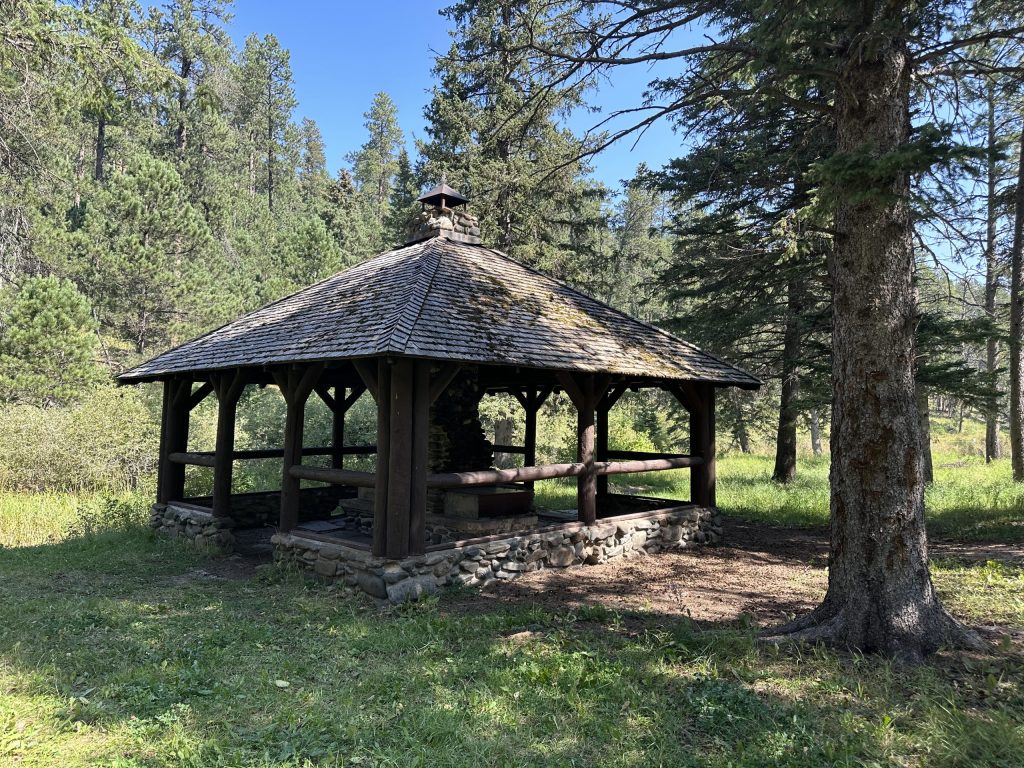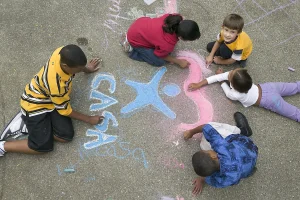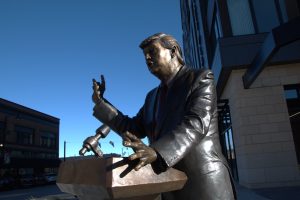Rapid City, SD–– HistoriCorps and the Black Hills National Forest are seeking volunteers of all skill levels to help rehabilitate the historic Dalton Lake Pavilion, with two week-long volunteer opportunities running from August 10 -22. Those interested in volunteering can visit www.historicorps.org to register for the project and learn more about other HistoriCorps volunteer opportunities. HistoriCorps is a national 501(c)(3) nonprofit dedicated to engaging volunteer workforces to preserve historic places and provide free mentorship in the preservation trades.
With quaint and unassuming beauty, the Dalton Lake Pavilion rests within the rugged landscape of South Dakota’s Black Hills. The Dalton Lake Campground, a humble but welcoming camping area, was constructed between 1935-1936 by Civilian Conservation Corps (CCC) enrollees from Camp Este in Nemo, SD. In addition to creating recreational campsites in Dalton Lake Campground, the CCC also built several footbridges, the dam and reservoir (i.e. Dalton Lake), and the Dalton Lake Pavilion. There were also a handful of other CCC projects which are no longer extant, including a well and well house, a changing house, and even a three-level ski jump with a nearby warming hut.
In its nearly 90-year lifetime, the Dalton Lake Campground has withstood many trials. Most notably, the campground was severely affected by floods in 1972, which largely destroyed the original CCC-era dam. The Dalton Lake Pavilion withstood the floods, carrying on its historic legacy. The Dalton Lake Pavilion is distinct within the rustic style, likely unique to the Black Hills, or even to the Camp Este CCC-camp. The only other known CCC-era building with a similar style was a likely destroyed shelter from the former Spruce Tree Campground.
The Black Hills of South Dakota and Wyoming have long been held sacred by the indigenous people of the area. Derived from the Lakota language, the words “Paha Sapa,” meaning “hills that are black,” honor the dark, pine-covered hills rising several thousand feet above the surrounding prairie. In 1868, the United States government pledged that the Black Hills area would be “set apart for the absolute and undisturbed use and occupation” of the Sioux people, as part of the Great Sioux Reservation. However, after gold was discovered in the area in 1874, the United States confiscated the land and threatened inhabitants with starvation. The ownership and legacy of the Black Hills is still of great national importance and is the subject of important activism.
Derived in 1897 as the Black Hills Forest Reserve, the now Black Hills National Forest was created as one of the preliminary preservation areas in the United States, after increased forest fires lead to legislation of the Timber Culture Act and Forest Reserve Act of 1891. The Dalton Lake Campground is a popular spot for fishing, hiking, and camping. The nearby Dalton Lake Trailhead provides access to the Centennial Trail which is open for hiking, horseback-riding and bicycling.
More volunteers are still needed to ensure the success of this project. HistoriCorps welcomes but does not require any experience in the trades; mentorship and all necessary tools are provided. Volunteer sessions are scheduled Sunday evening through Friday morning, and volunteers can expect all meals to be provided by expert field staff. Participants will have access to camping accommodations for personal vehicles or small campervans. Tents, truck-campers, campervans, trailers and RVs 25ft and under will have access to our campground.
Project Details:
Location: Located approximately an hour northwest of Rapid City, SD.
Tasks: Improve overall appearance of the structure through roof replacement, further stabilize the structure through reconstruction of a log knee wall and log railing and post repair, improve site drainage, and (if time allows) remove graffiti to elevate exterior appearance, reinforce historic integrity by removal of non-historic materials, re-stain areas to improve past restoration efforts, improve visual connection to the structure by removing vegetation.
Dates: Session 1: August 10-15
Session 2: August 17-22
For more information or to register for a volunteer session, visit www.historicorps.org, or contact us at info@historicorps.org





